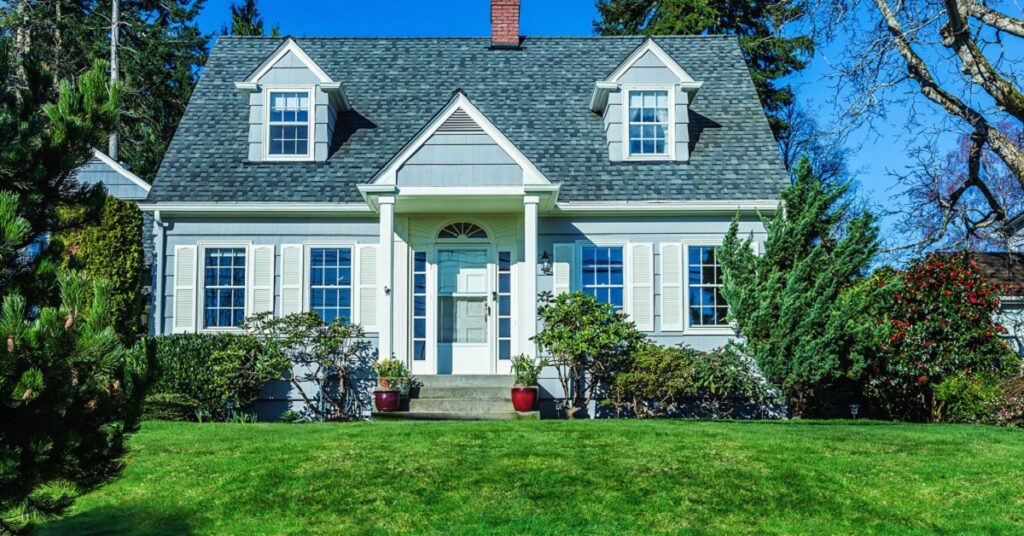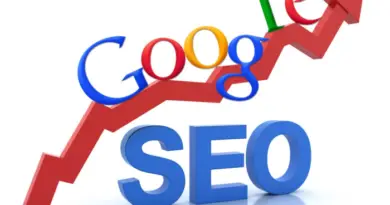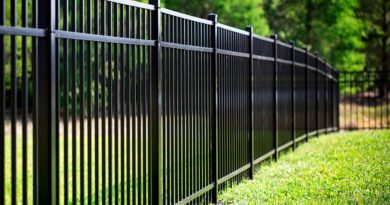5 Different Mortgage Loan Options for Home Buyers
Different mortgage loan options for home buyers; You must look for the best kind of mortgage to aid in the purchase before you start looking for the ideal house to purchase.

1. Conventional loan
Conventional loans come in two types: conforming and non-conforming, and they are not backed by the federal government.
A. Conforming Loans; A conforming loan “conforms” to the Federal Housing Finance Agency’s (FHFA) established standards for credit, debt, and loan size, as the name suggests. The conforming loan limits for 2022 are $647,200 in the majority of areas and $970,800 in more pricey areas.
B. Non Conforming Loans ; These loans do not meet FHFA standards. They might be for larger homes, or they might be offered to borrowers with subpar credit or who have experienced serious financial catastrophes such as a bankruptcy.
Pros of conventional loans
- Suitable for a primary residence, a second residence, or an investment property.
- Even though interest rates are slightly higher than those for other types of mortgages, overall borrowing costs are typically lower.
- Once you have 20 percent equity, you can ask your lender to remove private mortgage insurance (PMI) or refinance.
- can put down as little as 3% on loans backed by Freddie Mac or Fannie Mae.
- Sellers may pay a portion of the closing costs.
Cons of conventional loans
- Usually needs a minimum FICO score of 620 or higher (the same applies for refinancing)
- greater deposit required than for some government loans
- have a debt-to-income (DTI) ratio that is no higher than 43% (50 percent in some instances)
- If your down payment is less than 20% of the sales price, you’ll probably have to pay PMI.
- Significant evidence of income, assets, down payment, and employment is required.
Who should apply for a traditional loan?
A conventional mortgage is probably your best option, if you have good credit and the money to put down a sizeable amount of money. The most popular option for homebuyers is a conventional mortgage with a 30-year fixed rate.
Different Mortgage Loan Options for Home Buyers
2. Jumbo Loan
Jumbo mortgages live up to their name: These loans exceed FHFA restrictions. In high-cost areas like Los Angeles, San Francisco, New York City, and the state of Hawaii, where home prices may well exceed conforming loan limits, jumbo loans are more prevalent.
Pros of Jumbo Loan
- able to take out more loans to purchase a more expensive home
- Interest rates typically compare favorably to those of other conventional loans.
Cons of Jumbo Loan
- A down payment of between 10% and 20% is required.
- Usually, a FICO score of at least 700 is needed.
- cannot have a DTI ratio greater than 45%
- You must demonstrate that you have sizable cash or savings assets.
- Typically, more thorough documentation is needed to qualify
Who should get a Jumbo Loan?
A jumbo loan is probably your best option if you want to finance a sum of money that is greater than the most recent conforming loan limits.
3. Government Insured Loan
Different Mortgage Loan Options for Home Buyers, Although it is not a mortgage lender, the United States government does play a part in encouraging more people to buy homes. The Federal Housing Administration, the U.S. Department of Agriculture, and the U.S. Department of Veterans Affairs are three government organizations that back mortgages (VA loans).
FHA Loans – These home loans, which are insured by the FHA, make it easier for borrowers without substantial down payments or excellent credit to become homeowners. To qualify for the maximum 96.5 percent in FHA financing with a 3.5 percent down payment, borrowers must have a minimum FICO score of 580; however, if you put down at least 10%, a score of 500 is accepted. Two mortgage insurance premiums are necessary for FHA loans, which can raise the total cost of your mortgage. Last but not least, the home seller is permitted to pay closing costs with an FHA loan.
USDA Loans – Borrowers with moderate to low incomes can use USDA loans to purchase homes in rural areas. To be eligible, you must meet certain income requirements and buy a home in an area that is approved by the USDA. For qualified borrowers with low incomes, some USDA loans do not require a down payment. However, there are additional costs, such as an annual fee and an upfront fee equal to 1% of the loan amount (which is typically financed with the loan).
VA Loans – Veterans and active duty service members of the U.S. military can obtain flexible, low-interest mortgages through VA loans. In addition to not requiring a down payment, mortgage insurance, or a minimum credit score, VA loans also typically have capped closing costs that the seller may choose to cover. The funding fee for VA loans is a percentage of the loan amount and can be paid at closing upfront or added to the loan’s cost along with other closing costs.
Pros of Govt. Insured Loans
- When you are unable to obtain a conventional loan, assist you in financing a home.
- fewer restrictions on credit
- not require a sizable down payment
- available to both first-time and repeat customers
- VA loans don’t require mortgage insurance or a down payment.
Cons of Govt. Insured Loans
- FHA loans must pay mandatory mortgage insurance premiums, which cannot be waived absent a refinancing into a conventional loan.
- FHA loan limits are typically lower than conventional mortgage loan limits, which reduces the potential pool of available options.
- The borrower must occupy the home (although you may be able to finance a multi-unit building and rent out other units)
- could result in increased borrowing fees overall.
- Depending on the type of loan, prepare to provide additional documentation to demonstrate eligibility.
Who is eligible for a loan with government insurance?
FHA-backed and USDA-backed loans are excellent options if you are unable to obtain a conventional loan due to a low credit score or a lack of available funds for a down payment. Veterans Affairs-backed loans are frequently preferable to traditional loans for active-duty military personnel, veterans, and eligible spouses.
4. Fixed rate Mortgage
The monthly mortgage payment for a fixed-rate mortgage remains constant throughout the term of the loan because the interest rate is maintained at the same level. Although some lenders allow borrowers to choose any term between eight and thirty years, fixed loans typically have terms of 15 or 30 years.
Pros of Fixed rate Mortgage
- The monthly principal and interest payments are fixed for the duration of the loan.
- can more precisely plan other monthly expenses
Cons of Fixed rate Mortgage
- A longer-term loan typically requires higher interest payments.
- Interest rates on fixed-rate mortgages are typically higher (ARMs)
For whom is a fixed-rate mortgage appropriate?
A fixed-rate mortgage is the best option for you if you want to avoid the possibility of changes to your monthly payments and you intend to live in your home for at least five to seven years.
5. Adjustable rate Mortgage (ARMs)
Different Mortgage Loan Options for Home Buyers, Adjustable-rate mortgages (ARMs) have variable interest rates that can rise or fall with market conditions, in contrast to the stability of fixed-rate loans. Before the loan switches to a variable interest rate for the remaining term, many ARM products have a fixed interest rate for a few years.
A 7-year/6-month ARM, for instance, specifies that your rate will be the same for the first seven years and then adjust every six months after that. Read the fine print carefully if you’re thinking about an ARM to learn how much your rate might go up and how much you might end up paying once the introductory period is over.
Pros of ARMs
- Lower fixed rate during the first few years of homeownership (although this isn’t a guarantee; recently, 30-year fixed rates have in fact been keeping up with 5/1 ARMs);
- can significantly reduce the cost of interest payments
Cons of ARMs
- Mortgage payments might become unaffordable, which would lead to a loan default.
- In a few years, home values might decline, making it more difficult to refinance or sell before the loan resets.
Who Should get ARMs
An ARM could help you save on interest payments if you don’t intend to live in your house for more than a few years. But if you’re still living in the house, you need to be prepared to accept a certain amount of risk that your payments might go up.
Other Types of Loans
You may come across the following mortgage types when looking for a loan in addition to these typical types:
Construction Loan
A construction loan might be a wise decision if you want to build a house. You can choose to obtain a construction loan separately for the project and a mortgage separately to pay it off, or you can combine the two (known as a construction-to-permanent loan). A construction loan typically requires a larger down payment and evidence of your ability to pay.
Interest only Mortgages
For a predetermined amount of time, an interest-only mortgage requires the borrower to pay only the interest on the loan. Your monthly payment rises as you start paying your principal after that period, which is typically between five and seven years. Since you are initially only paying interest, you won’t be able to accumulate equity as quickly with this kind of loan. The best borrowers for these loans are those who are confident in their ability to sell or refinance, as well as those who can predictably make the higher monthly payments.
Piggyback Loans
A piggyback loan, also known as an 80/10/10 loan, consists of two loans: one for 80% of the home’s purchase price and the other for 10%. Then you put down 10% of the purchase price. The borrower can avoid paying for mortgage insurance with the aid of these. While it may sound appealing to stop making those PMI payments, keep in mind that piggyback loans involve two sets of closing costs and two loans with interest. To determine whether you are actually saving enough money to make this unusual arrangement worthwhile, you will need to do the math.
Balloon Mortgages
Another type of mortgage you might encounter is a balloon mortgage, which calls for a sizable payment to be made at the conclusion of the loan term.
Normally, you’ll pay back the loan over a 30-year term, but only for a brief period of time, like seven years. You’ll make a sizable payment on the remaining balance at the end of that period. To determine whether a balloon mortgage makes sense for you, use the balloon mortgage calculator from Bank rate.




I抦 no longer positive the place you are getting your info, however good topic. I must spend a while finding out more or working out more. Thanks for great information I used to be on the lookout for this information for my mission.